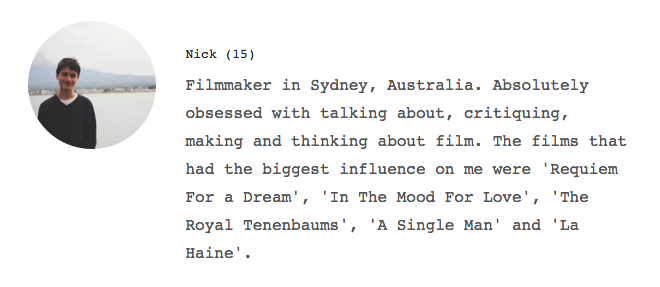Mulholland Drive (2001) – dir. David Lynch
Review and Analysis by Nick Ward
One of my favourite films of all time, and often considered a masterpiece, Mulholland Drive topped BBC’s Greatest Movies of The 21st Century list a few years ago (followed by Wong Kar- Wai’s In The Mood For Love). Mulholland Drive is still today, one of the most respected and thoroughly analysed films of all time.
David Lynch (Eraserhead, Blue Velvet, Twin Peaks) has been cited as America’s first popular surrealist filmmaker, bursting onto the scene in the seventies with the twisted, black-and-white Eraserhead (also playing at the festival). The majority of his films are extremely puzzling; often based on dreams, death and fear.
It was in the late nineties that Lynch started to develop a mystery television series starring Naomi Watts. However, after production and studio conflicts, Lynch decided to turn the series into a film instead. Thus, we have Mulholland Drive.
On a surface level, the film opens with Betty, a fresh-faced actress moving to Hollywood to become a star, after winning a doodlebug dancing contest. While living in her apartment, she stumbles across Rita, a woman who has recently been in a car crash and rendered an amnesiac. Through a set of discoveries, the two try to discover more about Rita’s dark past.
I’m going to leave explaining the occurrences in the film until my analysis (which will be after the review), as I believe this a film that you should go in knowing absolutely nothing about, and is easily spoiled.
The film is gorgeously shot, painting a dream-like, yet oddly sinister portrait of Los Angeles. Lynch’s mise-en-scène is flawless as always, leaving a lot of subtleties in the background to be analysed and discussed. The editing is perfect, especially in the more tense scenes of the film. The soundtrack is dark and looming, yet heartbreaking and emotional, featuring a Spanish a Capella rendition of Roy Orbison’s Crying, in one of the film’s most moving and harrowing scenes (You can view the scene here).
The performances are also fantastic, especially Naomi Watts, who shines as Betty. Justin Theroux is also hilarious as Adam Kesher, a young film director who struggles against the intimidating producers and executives above him.
I can remember the first time I saw the film, not too long ago at the Hayden Orpheum in Sydney. The entire audience was transfixed to the screen, often screaming and squirming in the seats, at the films more horrifying and tense moments. What surprised me though, was how many people were laughing at the film’s very dreamy, and odd tone. I think this is what Lynch wants; to taunt the audience and force them to question the creative choices he makes.
In Mulholland Drive, Lynch has created a layered, dark tale, that encourages audiences to explore the many meanings and messages, within it’s odd, puzzling shell. I recommend this movie to almost everyone interested in film and storytelling, and looking to see something very cerebral and puzzling.
The late Roger Ebert said about the film,
This is a movie to surrender yourself to. If you require logic, see something else. “Mulholland Drive” works directly on the emotions, like music. Individual scenes play well by themselves, as they do in dreams, but they don’t connect in a way that makes sense– again, like dreams. The way you know the movie is over is that it ends. And then you tell a friend, “I saw the weirdest movie last night.” Just like you tell them you had the weirdest dream.

–
My Brief Thoughts On What The Film Means – Spoilers
I subscribe to the popular theme that the first half of the film is Diane’s dream/fantasy, and that the second half is the sad reality of her life. The tone of the first half is very dreamlike and Diane’s character in the dream, Betty, is completely happy and almost free of worry. In the second half – the reality – she is troubled, depressed and has gone almost completely insane.
In the real world, Diane has discovered that her love, Rita, is cheating on her with Adam Kesher, the director. Diane decides to hire a hitman to kill Rita, and then when she realises what she has done, she has another mental breakdown and kills herself.
Throughout the film, we have a bunch of seemingly random scenes, such as two men conversing at a diner (which is, one of the most terrifying sequences in any Lynch film) and a hitman’s failed attempt at a job. These little vignettes are all part of her dream, the same way that we all have multiple dreams in one night. These vignettes are exactly like the first half of the film – where they are the fantasy, or preferred outcome for Diane – of what has happened. Example: she wishes that the hitman failed the job, and that Rita is actually still alive.
This is a very basic explanation of how I view the film. Half of the fun of watching Mulholland Drive is coming up with your own theories and reasonings for certain things. It would take thousands of pages, to write about all the intricacies, hidden details and other theories.
Here’s a link to a whole website, purely about the film’s meaning.
Mulholland Drive – MA 15+
American Essentials Film Festival

